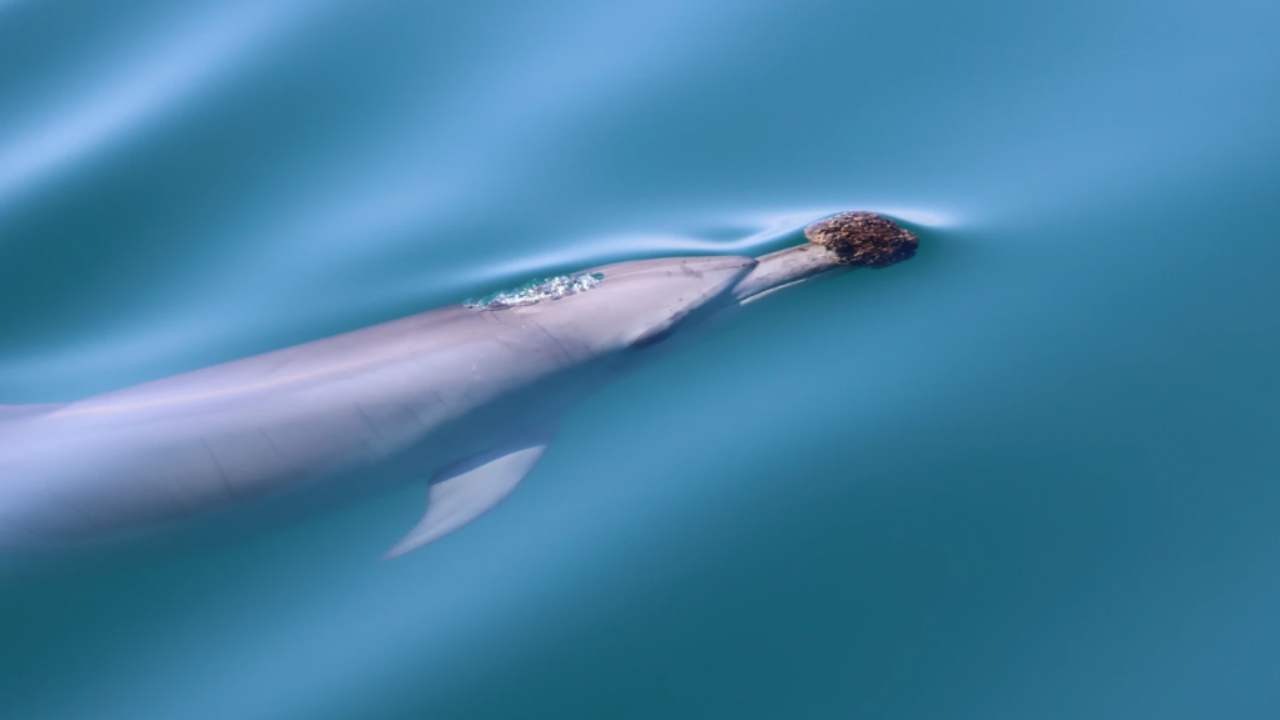
©(Meredith MacQueeney / Shark Bay Dolphin Research Project via AP)
Vocabulary:
- cantaloupe /KAN-tl-ohp/
- barred /bahrd/
- echolocation /ek-oh-loh-KEY-shuhn/
- impediment /im-PED-uh-muhnt/
- dexterity /dek-STER-i-tee/
[noun] – a round fruit with orange flesh and a hard, net-like skin
The farmer picked a cantaloupe from the field and placed it in a basket.
[adjective] – blocked or covered by a barrier; having stripes or lines (in this context, refers to a fish with stripes)
The zoo has a barred cage to keep the tigers safe from visitors.
[noun] – the use of sound waves and echoes to find objects and navigate
Scientists study whales to understand how they use echolocation in the deep ocean.
[noun] – something that makes it difficult to do something or slows down progress
Despite the impediment of heavy rain, the rescue team continued their search.
[noun] – the skill of using hands or body easily and effectively
The surgeon needed great dexterity to perform the delicate operation.
Article reading:
Researchers confirmed that the dolphins still use echolocation while sponge hunting, but the sponge causes a muffling effect similar to wearing a mask. Marine biologist Ellen Rose Jacobs from the University of Aarhus in Denmark used underwater microphones to study the dolphins’ echolocation clicks. She also created models to measure how the sponge changes the sound waves. Despite this impediment, the dolphins have adapted to continue finding food efficiently. Marine experts describe the technique as requiring great dexterity and long-term training, comparing it to hunting while blindfolded. This study highlights the sophistication of dolphin behavior and how they can develop specialized skills through observation and practice.
Discussion Questions:
- Have you ever learned a special skill from your parents or a family member? If yes, what was the skill, and how did you learn it? If not, what skill would you like to learn from a family member?
- Have you ever tried to do something that was difficult at first but became easier after practice? If yes, what was it, and how did you improve? If not, what is something difficult you would like to try and practice?
- Do you agree that animals can teach each other new ways to survive?
- Why do you think some animals learn to use tools while others do not?
- What can humans learn from studying the special hunting techniques of dolphins?
Summarization
Describe:
- dolphin
- marine sponge
- sandperch
- population
- behavior